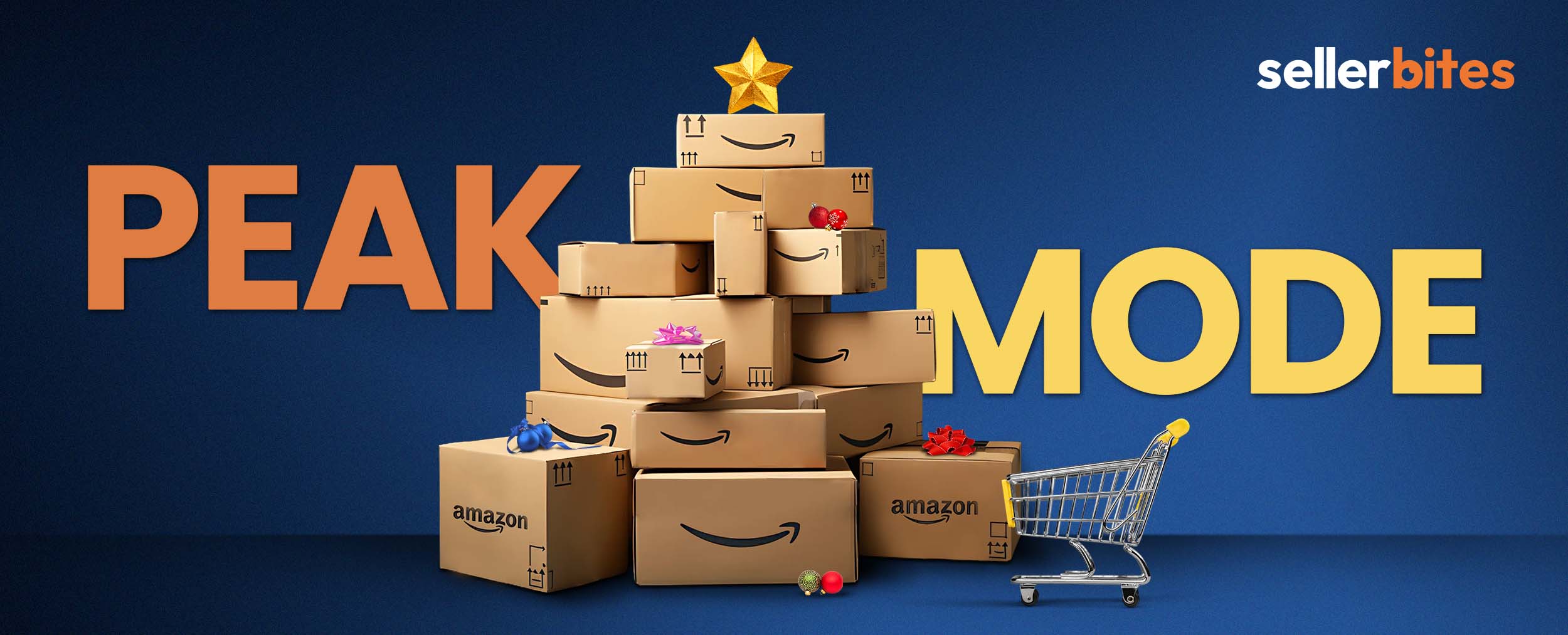If you don’t need a bigger ad budget to win the holiday, what do you need?
A pulse on shopper habits, the patience to wait, and the courage to strike. The last quarter of the year is less a sprint of spend and more a season of strategy.
Here’s why.
- This is the ad that drives a strong holiday season 🎯
- Who controls the clock on your holiday deals? ⏰
- Lower prices won’t save your margins 💸

SANTA’S SECRET AD PLAYBOOK
Strong ads spark stronger holiday season

The last quarter of the year is ecommerce’s main event. Your products are ready, your inventory’s stocked, and your operations running smoother than Santa’s sleigh ride.
Now comes the part that decides whether you’re just another ornament on Amazon’s shelf or now: ads
According to Amazon’s BFCM Advertising Guide, peak-season campaigns should do three things:
- Build awareness before the holidays,
- Sustain momentum during the shopping frenzy, and
- Retarget deal-hungry buyers even after the dust settles.
Can you pull that off without burning your budget?
☕ Start planting seeds early
Put your brand on their mind before holiday shopping even begins.
- Follow the rules. Amazon is strict, review their policies to avoid takedowns.
- Diversify formats. Use static, video, and A+ content for visibility.
- Tap into FOMO. Phrases like “Black Friday Week” or “11.11 only” drive urgency.
- Tip: Keep promos and ads separate, Amazon enforces strict timing rules.
⌚ Playing the long game
Ads can burn through budgets quicker than holiday desserts disappear.
- Budget rules. Two types:
- Schedule-based: Pre-set higher budgets for peak days.
- Performance-based: Amazon boosts spend when KPIs (RoAS, CTR, conversions) are met.
- Fixed budgets. Daily rolls over unused spend. Lifetime can burn out in a day, handle your cash carefully.
- Emergency pause. Low stock or poor performance? Stop campaigns in Campaign Manager before they drain more dollars.
Pro tip: Automation can save you here, tools like Viral Launch’s AdSprout handle bid and budget adjustments so you don’t have to babysit campaigns 24/7.
🎯 The second (and third… and seventh) shot
The “Rule of 7” says shoppers need multiple nudges before buying. Amazon helps you stay visible:
- Sponsored Display. Retarget on and off Amazon, shoppers who viewed your product or even a competitor’s in the past 30 days.
- Amazon DSP. Advanced, data-driven targeting that follows high-intent shoppers across platforms, no keywords, just behavior.
Q4 ads are less about flashy spending and more about discipline. It can feel like a gamble, but with the right mix of prep, timing, and retargeting, you’re not just rolling dice, you’re stacking them in your favor.

DASHING THROUGH THE DEALS
Your holiday promos run on Amazon’s clock

Ads might hog the spotlight, but when holiday shoppers hit Amazon, they’re really chasing one thing: discounts.
Amazon hands sellers four tools: promotions, deals, coupons, and straight-up discounts. But, they only work if you know when (and how) to use them.
✋ Before anything else…
Are you eligible? Better double-check as not every seller gets access to every promo type, and nothing kills momentum faster than planning a deal you can’t actually run.
⚖️ Deals vs. Coupons
- Dealsare Amazon’s show-stoppers, no codes, just instant visibility.
- Lightning Deals: 4–12 hours (or until sold out). The ticking clock fuels pure FOMO.
- 7-Day Deals: A full week with that “limited time deal” badge and a prime spot on Today’s Deals.
- Coupons, meanwhile, are the steady workhorses, clip-and-save offers living right on your product page.
- Standard coupons: Run up to 30 days.
- Subscribe & Save coupons: Extendable for up to 365 days (perfect for consumables).
🥞 Stacking offers without nuking margins
Amazon lets you combine promos, but only in certain ways:
- Coupon with a percentage-off deal
- Coupon with a BOGO deal
What you can’t do is pair percentage-off with BOGO, Amazon blocks it to protect sellers from giving away too much.
🗓️ Planning your promos
Here’s the catch: peak-season promos run on Amazon’s clock, not yours.
- Submission timing: Deadlines vary by type and event.
- Shopper behavior: Align offers with peak buying periods, not random days.
A promo calendar is your GPS through Q4 chaos—or better yet, you can entrust your business to account management services like Seller Interactive to handle everything from campaign planning to execution.
🚨 Deadlines you can’t miss
Amazon’s deadlines are strict: miss one and you’re out. This year:
- Prime Big Deal Days (October): Best Deals closed September 12, while Prime Exclusive Deals (PEDs) ran until the event.
- Black Friday/Cyber Monday (November): Best Deals close October 28, while PEDs opened Sept 10.
📆 Building your calendar
Experts mark Sept 15 as the unofficial promo-planning deadline. After that, get everything on a calendar:
- Durations: Long awareness promos vs. short “buy-now” bursts.
- Goals: Brand exposure vs. straight sales.
- Budget: When to raise bids.
- Targeting: Prime-only vs. everyone.
- Inventory: Mid-campaign checks so you don’t pay fees on pulled promos.
Doesn’t matter if you use a fancy tool or just Excel. What matters is sticking to it.

FROSTY MARGINS MADE WARM
Holiday strategies to guard your profits

Ads and promos can grab attention, but let’s be real, the final nudge to “Buy Now” is usually the price.
Problem is, tariffs and supply chain costs keep creeping up, so slashing prices blindly is basically lighting profits on fire. So what can you do? Lean on strategy.
Here are three ways to price smart this Q4:
- The old-school grind. Want full control? Run your own pricing tests:
- Do the math. Factor in sourcing, shipping, storage, and ad spend, then set a profit target.
- Pick test discounts. Try 5%, 8%, and 10%. 🧪
- Run A/B tests. Ideally, you test in August–September, then scale the winner for Q4.
- Heads-up: It’s legal, but some shoppers may not love being test subjects.
- Let the robots work. If manual testing feels like juggling flaming torches, tools like Repricer.com can help automate pricing with rule-based options such as:
- Competitive rules: Match or undercut the Featured Offer, marketplace low, or external low.
- Sales-based rules: Adjust prices by sales velocity.
- B2B and quantity rules: Tweak business prices or bulk discounts. 💻
- Custom rules: Set guardrails to protect margins.
- Bundle over bargain. Discounts aren’t always the answer, sometimes bundling is smarter. It boosts perceived value without cutting deep into margins:
- Pure bundles: Variations of the same product, like a 3-pack of shampoos.
- Gift bundles: Curated sets such as “Winter Collection” or “For Mom”
- DIY bundles: Shoppers build their own mix, discounted only when bought together.
🛍️ At the end of the day, Q4 isn’t about slashing prices the deepest, it’s about playing the smartest. Shoppers want deals, you want profits.
Strike a balance testing, automation, and bundling, you won’t just survive the holiday price wars, you’ll win them.






